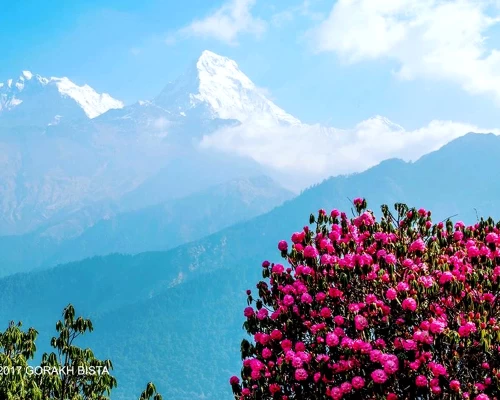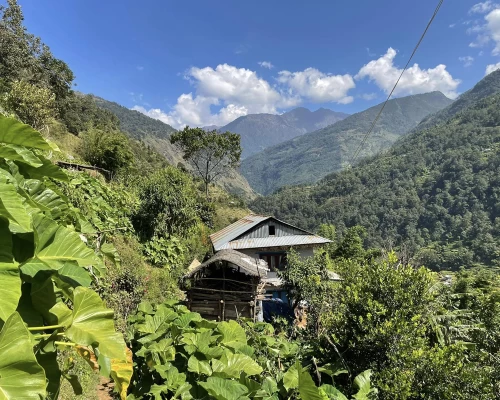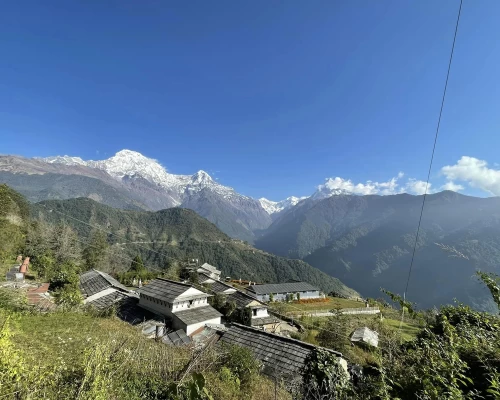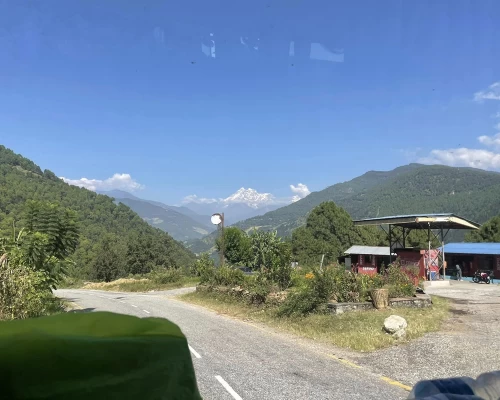What to Expect During Annapurna Panorama Trekking?
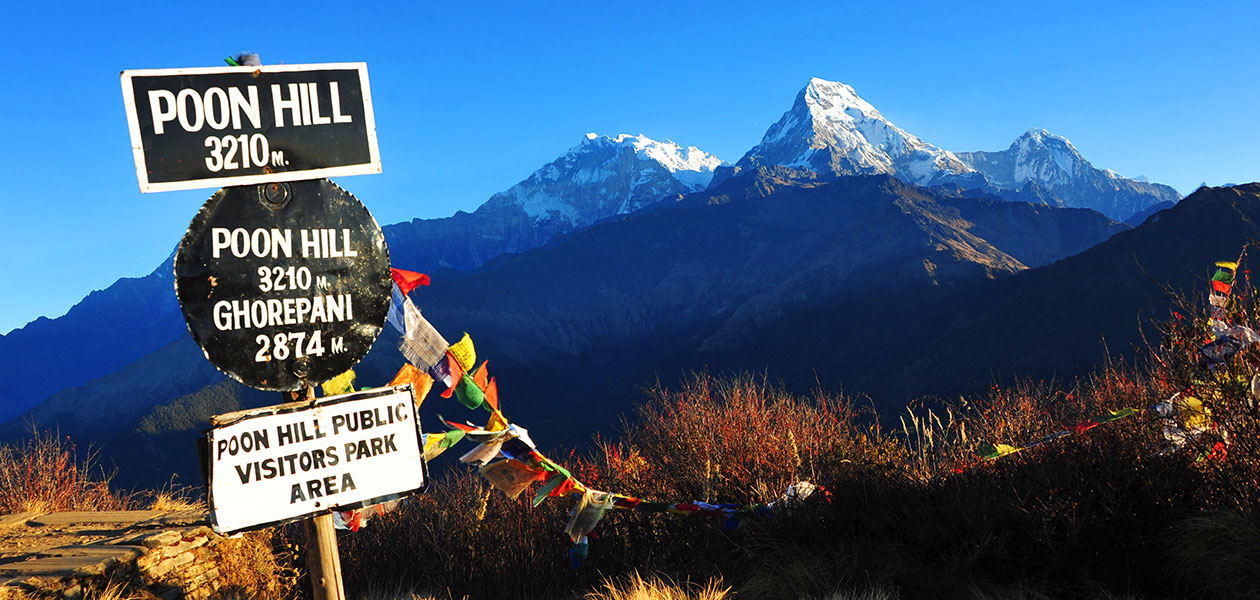
Every day of your Annapurna Panorama Trekking is filled with immersive cultural and natural experiences. The itinerary plans for this Himalayan exploration have been designed to cover short trekking distances each day, so you will have more time to enjoy the experience rather than worry about the distance that you have to cover every day. Your trek days start with a healthy breakfast, typically served from around 7 AM to 8 AM. You will then slowly move along the trekking trail, enjoying the natural charms and taking your time to understand the cultural sites of the traditional settlements you pass along the way.
You will take a lunch break after trekking for about 3 to 4 hours, and the lunch stop will be about an hour long. As you will not have to walk a lot of distance after lunch, you can enjoy a slow-paced journey as you head toward your rest stop. If the daylight hour is in favor, you will have enough time to check out the amazing highlights of your rest stops at the end of each day’s trek. Dinner is served at the teahouses typically from around 7 PM, and after dining with your group, you will have enough time to take a refreshing break. You can watch movies and documentaries or play board and card games with your group. Your guide will also brief you about the adventure unpacking the next day so you can make the necessary preparations.
Who Can Do This Trek?
The Annapurna region is known for offering a diverse range of exploration activities that are suitable for travelers of different calibers. This Annapurna Panorama Trekking is one of the easier forms of exploration in this charming trekking destination that is neither physically demanding nor mentally exhausting. The trekking route of the cultural experience doesn’t take you across significant altitude points nor a Himalayan pass or technical section. The Annapurna Panorama Trek is on such an easy scale that even a diverse age group can easily participate.
If you are looking for a pleasant experience in the Himalayas that offers the ultimate cultural experience, this panorama trek is just the right deal for you. You will able to enjoy this adventure with your friends and family without the need to worry about if it can be a challenge for the kids or elderly members of the group. The success rate of Annapurna Panorama Trekking with Explorer Adventure is an absolute 100%, and even groups with trekkers in their late 70s have successfully completed this journey with us.
What Makes Annapurna Panorama Trekking So Special?

Annapurna Panorama Trekking is a wonderful opportunity to experience the cultural side of the second most popular Himalayan trekking destination in the country. This exhilarating trekking adventure will take you across some of the major settlements in the Annapurna region, comprised of Gurung, Magar, Tamang, Thakali, Chhetri, and Brahmin ethnic groups. Besides the immense cultural immersion, where you will have first-hand experience with the rich culture, traditions, and lifestyle of the Himalayan settlements, the natural aspect is also quite phenomenal in this trek.
The reason why the Annapurna region is popular and is the second most beloved trekking destination in the country is due to the blend of both natural and cultural experiences. Among other trekking prospects in the region, this panorama trek brings the best out of both of these aspects. You will also take your time relishing the natural charms of the region as you wander inside the Annapurna Conservation Area (the largest conserved area in Nepal). On top of that, you will also get the opportunity to explore one of the most popular viewpoints in the lower Annapurna region, Poon Hill (3,210 meters).
Why Trek With Explorer Adventure?
Explorer Adventure has been designing iconic tours and trek packages in this Himalayan country for over a decade. With the combined skillset of expertise in their respective fields and with the combined experience of over 20 years, we always aspire to give our best and continuously evolve to enhance the experience. All of our guides are government-licensed, and our guides are assigned only after considering their area of expertise in the particular region to guarantee an immersive experience. We also strictly adhere to Eco Friendly and Reliable Tourism practices to promote sustainability in the industry.
Our trekking packages are reasonable, considering how we deliver the best available services on the trail. Explorer Adventure also contributes 20 to 25% of our profit to give back to the community. We support rural villages and schools with our charity programs. On top of that, we also contribute to trekking trail maintenance and taking care of the clean water drinking stations to keep the environment safe and clean.
Guide and Porter
Guide and porter are importance members of any long adventure no matter where in the world. These experienced professionals make your journey exciting and informative by adding valuable insights. Even if the Annapurna Panorama Trekking is not demanding like other high-altitude base camps and high-pass journeys, the guides and porters are essential in this trip to enhance your overall experience. The guide of your trek group will oversee all the factors of your adventure, from logistics details, rules, and regulations to your safety and comfort level. The government-licensed guide assigned to your group is also responsible for your health; they will keep tabs on your health by doing daily inspections.
Similarly, the porters are other valuable members of the exploration group who take care of the heavy luggage to make your exploration easier. A porter will generally carry around 15 kg worth of luggage from a single trekker (one porter is assigned for two trekkers). So you will be able to move around more freely during your trip. Furthermore, the porters are also mostly the natives of the region, which means that they can add invaluable insights to your exploration that you may not find in books.
Travel Insurance
For trekking in Nepal, travel insurance is a mandatory requirement. There are also several advantages of getting travel insurance; it handles your emergency medical expenses, takes care of lost baggage, smoothens the evacuation procedures, and even acts as a financial assurance, so you will be able to enjoy the trek without any worries. There are several types of insurance packages with different coverage plans; the more coverage policies your travel insurance has, the more expensive it is.
As Annapurna Panorama Trekking doesn’t take you to significant altitudes, getting travel insurance with coverage upto 3,000 meters will be sufficient. The cost of the standard insurance plan for trekking upto 3,000 meters starts at US$ 30. If your insurance has a better coverage plan, it can cost over US$ 100 as well. As for the standard coverage plan upto 6,000 meters, the starting cost is at US$ 100.
Permit and Fee
For doing the Annapurna Panorama View Trekking, you are just required to get one permit. As your exciting trek passes through the Annapurna Conservation Area, you will be required to get this permit to access the protected area in the region.
Permit for Annapurna Panorama Trekking
- Annapurna Conservation Area Permit (ACAP)
This conserved area permit costs approximately US$ 30 and can be easily obtained from the tourism board office in Kathmandu or from the board office in Pokhara. For a seamless experience, Explorer Adventure will collect this permit on your behalf.
Altitude Sickness
The human body generally starts to show the symptoms of Acute Mountain Sickness above the altitude of 2,500 meters if a proper acclimatization procedure is not followed. However, only the alpine zone (4,000 meters) and above have high potential risk of altitude sickness. As this exciting cultural exploration in the second most popular trekking destination in the country doesn’t take you to significant altitudes, there isn’t any risk of altitude sickness on this trip. The highest point you will reach in this trek will be poon Hill, which is at an elevation of only 3,210 meters (10,531 feet), so you don’t need to worry about altitude sickness in this exhilarating venture.
On top of that, in the Explorer Adventure’s Annapurna Panorama Trekking, you will walk slowly, taking your time with the exploration. You will also get enough rest periods along the route so your body will get enough rest and you won’t exhaust yourself during your trek.
Private Treks and Group Joining
Like any other trekking adventure in the country, there are two types of exploration groups for Annapurna Panorama Trekking: private group and group joining. Although the itinerary plans for your trek are already determined, you can either join the trek with a private group or with other trekking enthusiasts. In a group joining package, a departure date is set, and trekkers from all over the world can join until the group size reaches the required threshold. As for the private joining, you will have control over who will be joining your trek along with you.
You can decide on the number of trekkers joining the trek, and you will also have freedom over the start dates of the trek. As only your group will be joining the trip, you can decide on the starting date for your trip as per your flexibility.
Package Customization Option
Although this is our standard trekking package in the Annapurna region, we also offer customization options for travelers looking for a different experience. In the customizable option, you will have full control over the journey. You can determine several aspects of the trek, like the overall duration, highlight exploration around the region, number of rest days, the trekking pace of your trek, etc. If you want to extend your exploration in the region, you can also add other adventures in the Annapurna region to your itinerary plan. This customization option is best suited if you are traveling with a diverse-age trekking group or want to explore on your own accord.
Group Discounts
The Annapurna Panorama Trekking cost with Explorer Adventure is just US$ 650 per person. Although this is already a reasonably priced best-value experience package in th market, we also provide heavy discounts for group bookings. The discount rate will depend on your group size. There are particularly three plans for group discounts with us: for a group size of 2 to 4 people, for a group of 5 to 9 people, and for a group of 10+ people. To get the best quotation for your group booking, get in touch with us via our Contact Page.
Food and Accomodation

Annapurna region is quite developed in both food and accommodation aspects when it comes to Himalayan adventures. This second mainstream trekking destination lives upto its reputation to provide the best experience during your Annapurna Panorama View Trekking. As your trekking trail doesn’t stray too far into the wild, you will be able to enjoy comfortable accommodation facilities during your trek; you also have the option to upgrade to luxurious mode for a more personalized touch.
As for the food, this cultural exploration doesn’t disappoint you when it comes to matching your palate. You will be able to enjoy a wide range of cultural delicacies that represent diverse ethnic groups in the country. On top of that, the menus at teahouses also comprise popular Tibetan culture-inspired and Indian dishes, including continental menus with a touch of natural Nepali spices.
Packing for Trek
The packing for the Annapurna Panorama View Trekking will depend on the season of your visit. If you are doing this trek during any of the peak seasons (i.e., spring and autumn), you will not have to deal with weather challenges during your trip. Packing light layers will be sufficient for the trek as you don't even cross the sub-alpine zone (3,000 meters) except during the hike to Poon Hill. However, trekking boots are definitely recommended to ensure a comfortable experience, you can also bring sports shoes for doing short hikes.
If you are planning to do this trek during the off-seasons (i.e., monsoon and winter), you will need to bring appropriate layers and gear to handle the challenging weather conditions.
During the monsoon season, the continuous rainfall can disrupt the itinerary plans and make the trekking trails more challenging. So, to overcome the slippery trails and unstable weather, you need to pack appropriate rain gear and trekking boots with a good grip. As for the winter, the Annapurna Panorama Trekking latkes place under the snow-line. Although there are low chances of snowfall in the winter, the morning and evening are still chilly. So, insulated and warm layers and footwear should be a top priority for your journey in this season.
You may also like:



